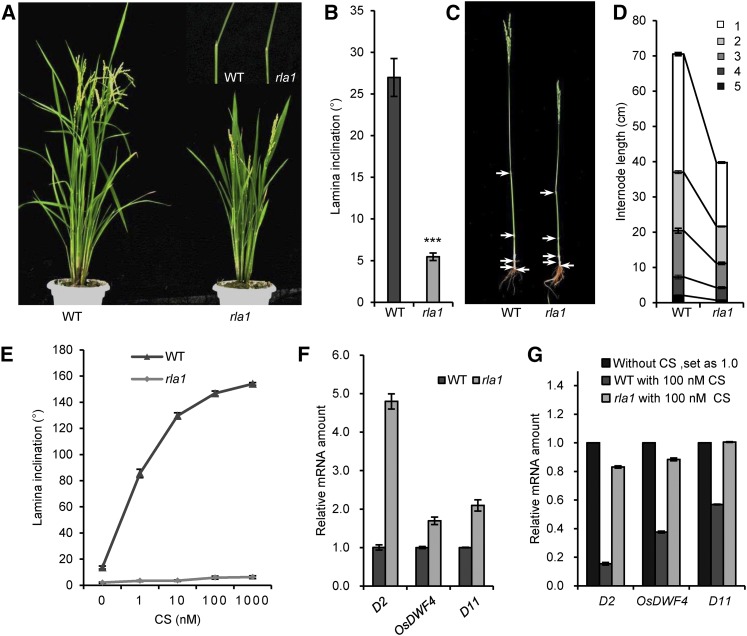Figure 1.
rla1 Is a BR-Insensitive Mutant.
(A) The morphological phenotypes of the wild type (WT) and rla1 mutants. The pictures at top right show the second lamina joints.
(B) The statistical data of the lamina angle of the second lamina joint. Data are means ± se (n = 25). The comparisons were determined by Student’s t test. ***P < 0.001.
(C) The internode phenotypes of the wild type and rla1 mutants. Arrows show the node positions.
(D) The statistical data of plant height and length of each internode of wild-type and rla1 plants. The numbers 1 to 5 indicate the first to fifth internodes, respectively. Data are means ± se (n = 20).
(E) The statistical data of lamina inclination responding to different CS concentrations in the wild type and rla1. The lamina joint of the first intact leaf were cut from the 1-week-old seedlings grown in the dark and treated with different CS concentrations for 48 h. Data are means ± se (n = 20).
(F) The relative transcript levels of D2, OsDWF4, and D11 in the 2-week-old wild-type and rla1 seedlings. The relative transcript level in wild type was defined as “1.” Data are means ± se (n = 3).
(G) The relative transcript levels of D2, OsDWF4, and D11 in the wild type and rla1 without or with 100 nM CS treatment for 3 h. Total RNAs were extracted from the lamina joints of the first intact leaf. Data are means ± se (n = 3).

